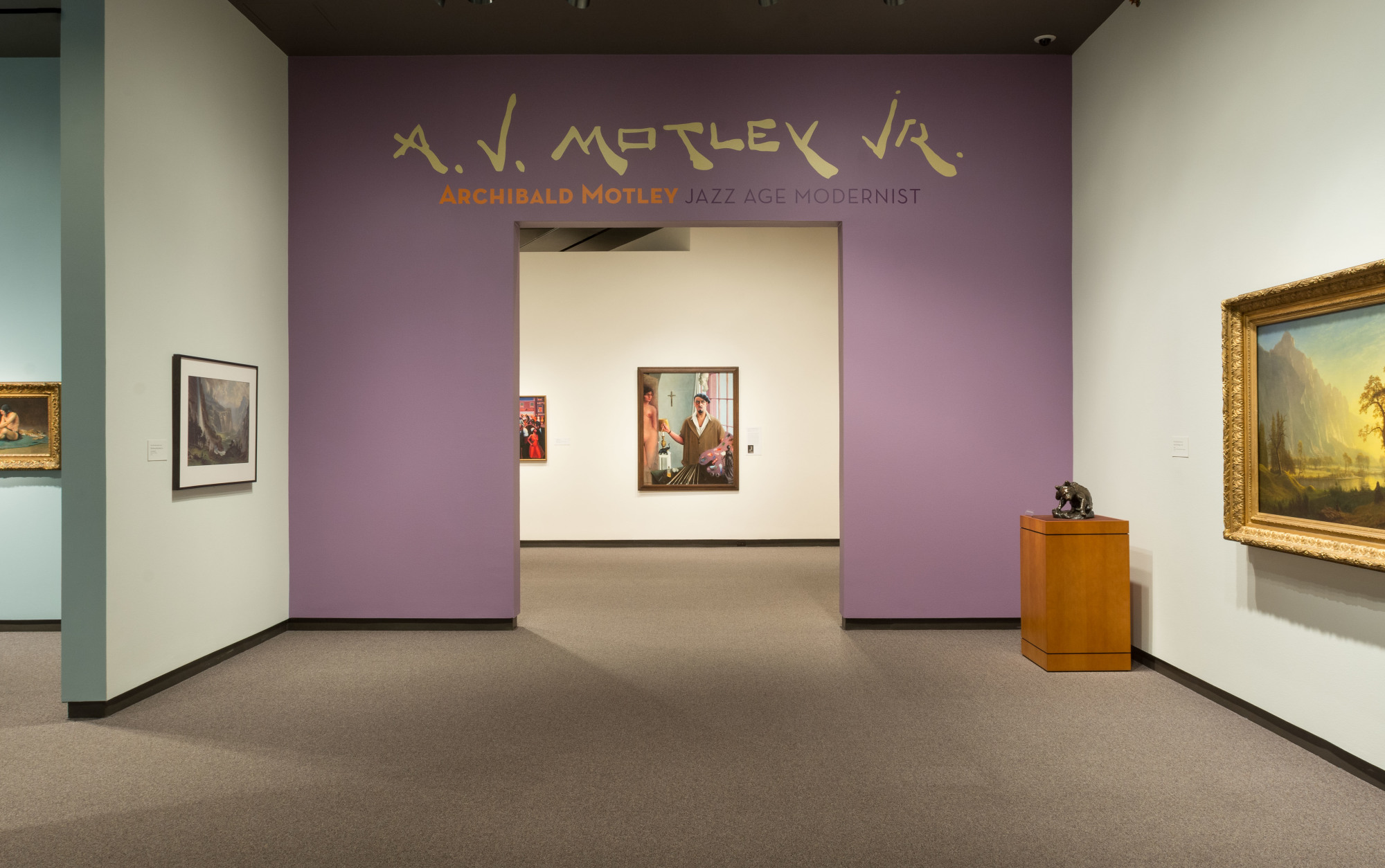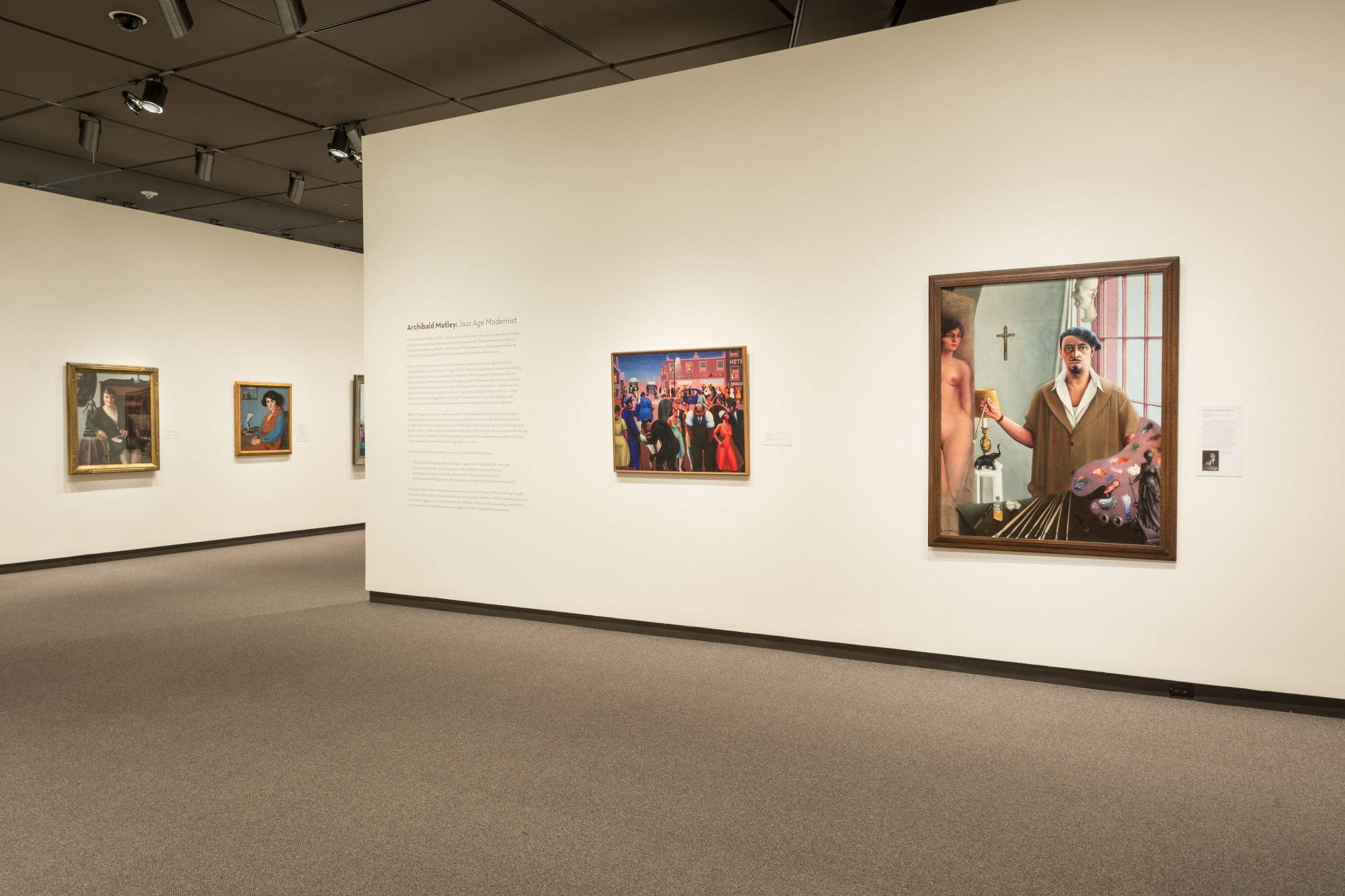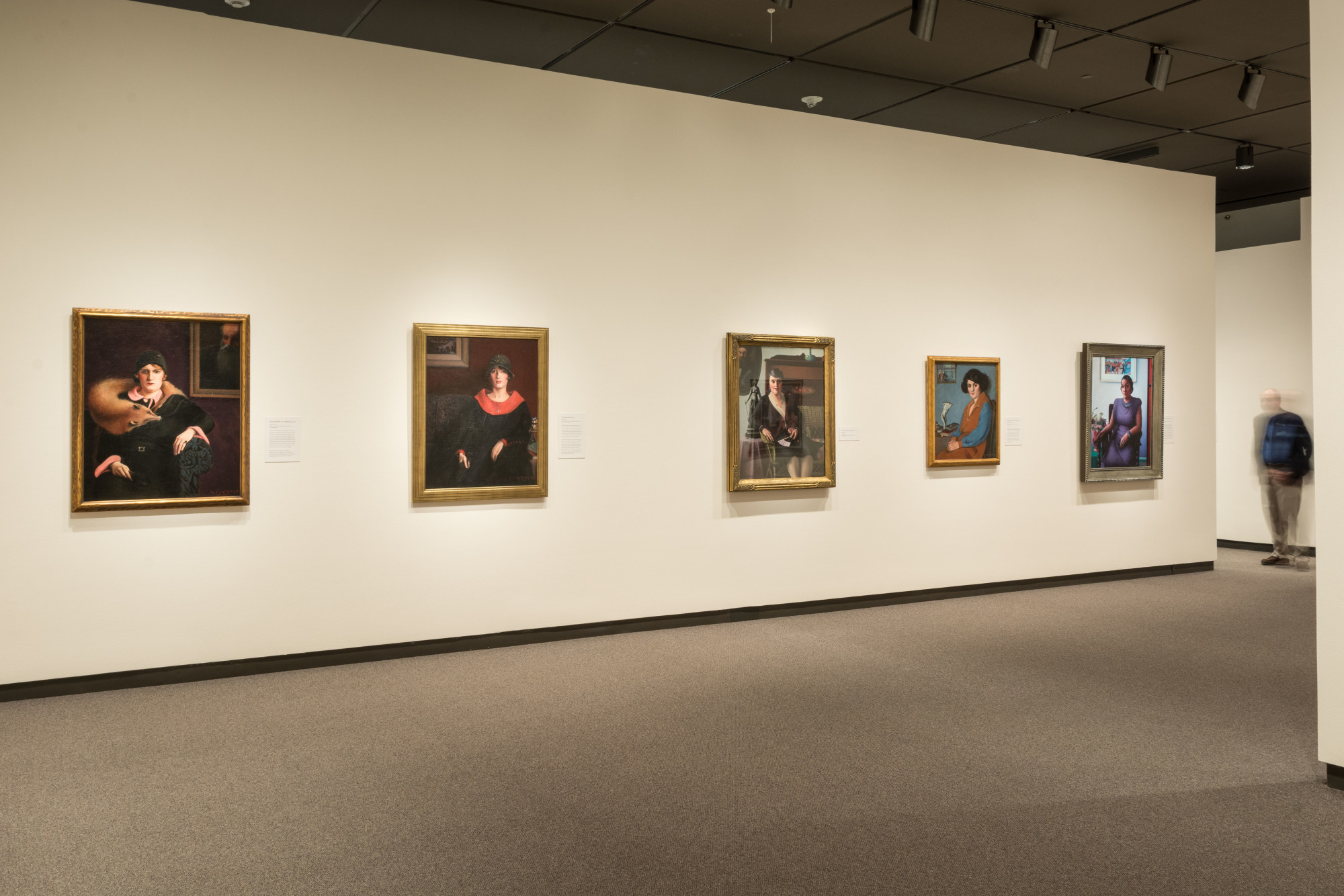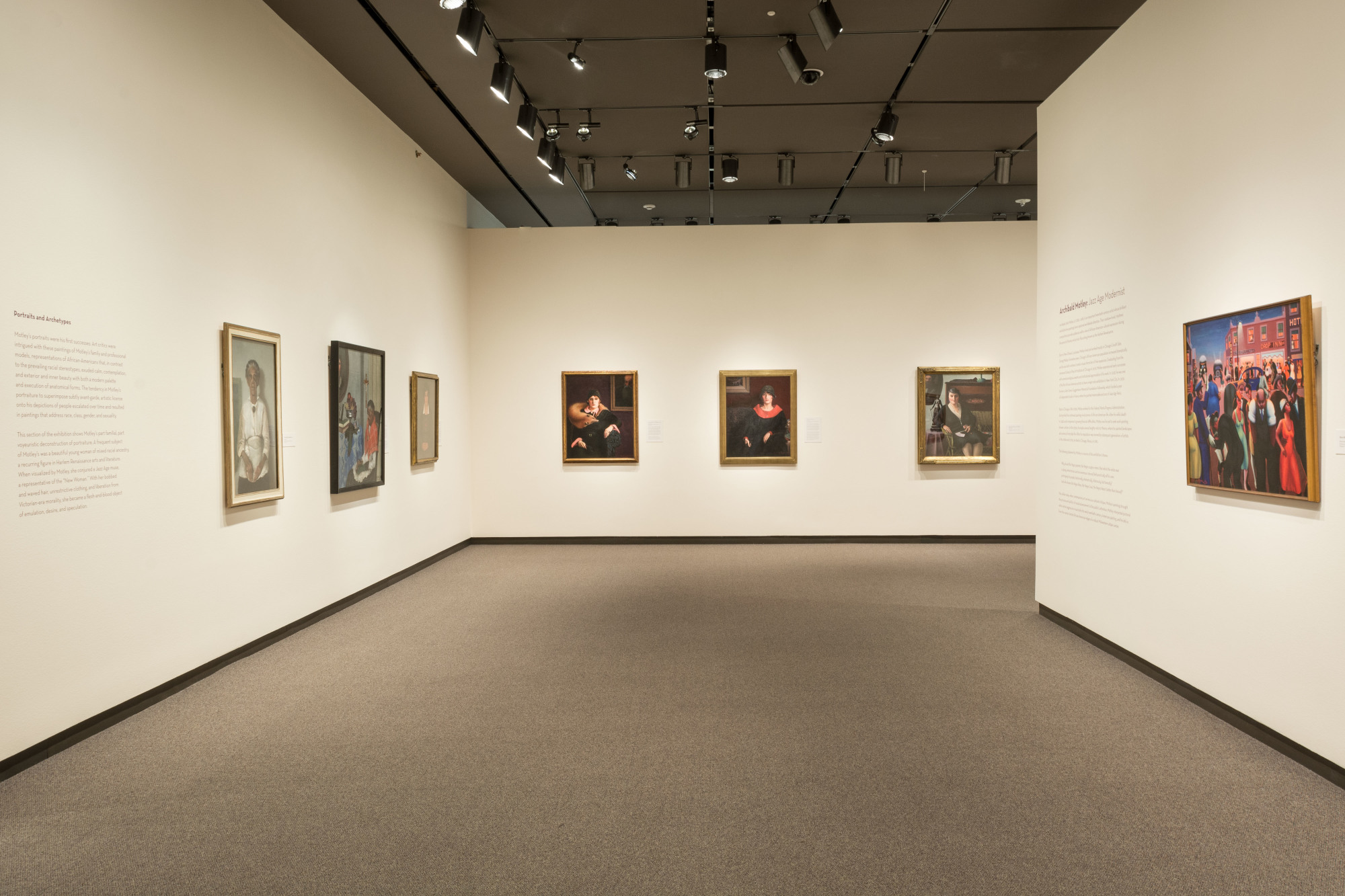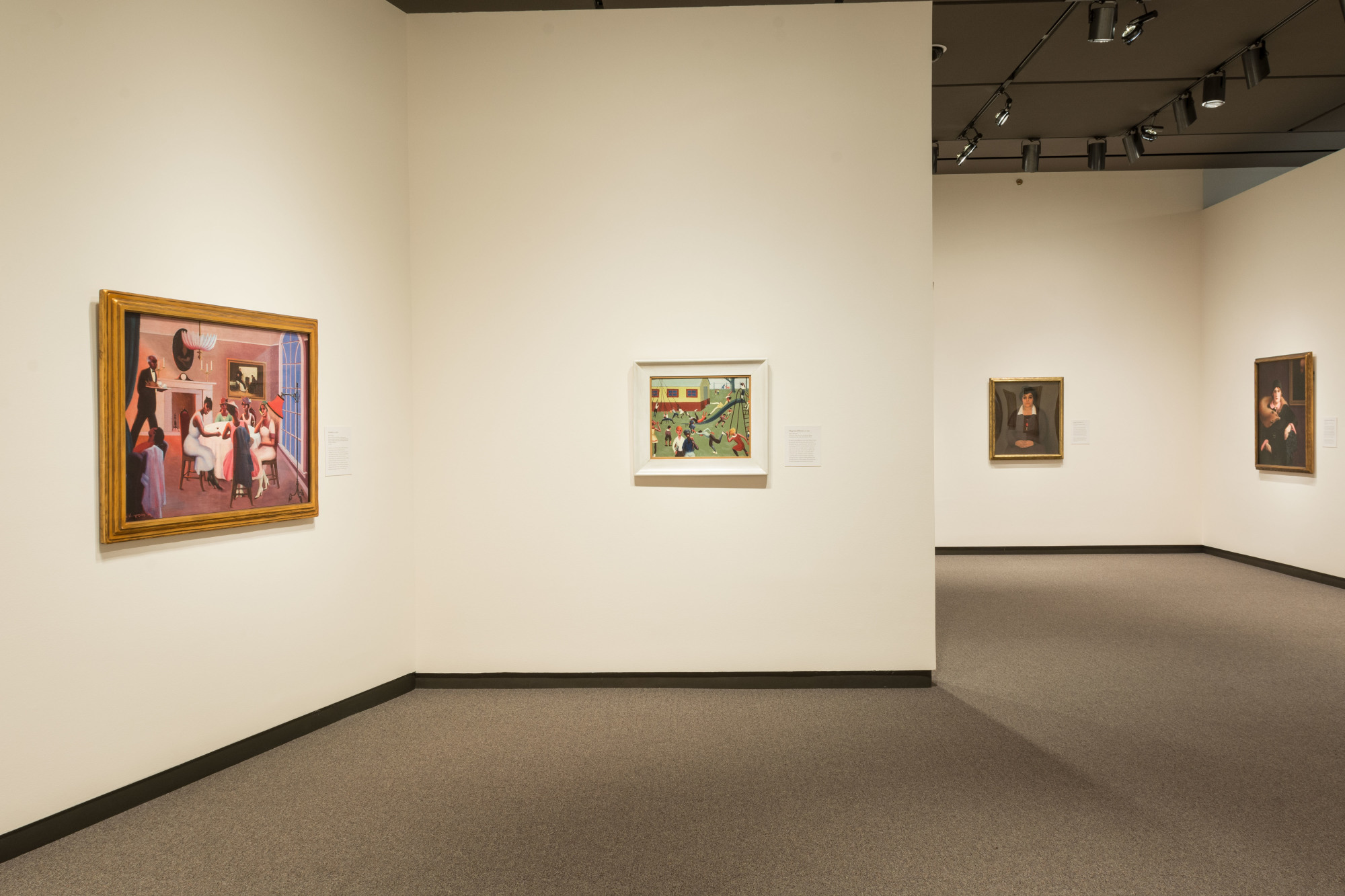Archibald Motley: Jazz Age Modernist

Archibald John Motley Jr. (1891–1981) is one of the most significant yet least known 20th-century artists, despite the continued broad appeal of his paintings. Many of his most important portraits and cultural scenes remain in private collections and few museums have had the opportunity to acquire his work. Archibald Motley: Jazz Age Modernist is the first retrospective of the American artist’s paintings in two decades. It introduces the artist's colorful canvases to a wider audience and reveals the rich sociological and art historical underpinnings of his work.
Archibald Motley includes 43 works spanning each period of Motley’s career, from 1919 to 1960. He was born in New Orleans, but during the first half of the 20th century he lived and worked in a predominantly white neighborhood on Chicago’s Southwest side, a few miles from the city’s growing black community known as “Bronzeville.” Motley's work examines this community, carefully constructing scenes that depict Chicago’s African-American elites, but also the worlds of the recently disembarked migrants from the South and other characters commonly overlooked. Motley’s scenes of life depict a parallel existence of labor and leisure. His portraits are voyeuristic, but they are also examinations of race, gender, and sexuality. Motley did not shy away from folklore fantasies, directly addressing slavery and racism. The exhibition also features his noteworthy depictions of Jazz Age Paris and 1950s Mexico.
Exhibition Highlights
Slide Controls
Slides
Installation Photos
Click a button below to open in gallery. Activating any of the below buttons shows the installation photos gallery
Archibald Motley: Jazz Age Modernist is made possible by the Terra Foundation for American Art; the National Endowment for the Humanities: Exploring the human endeavor; and the Henry Luce Foundation.


















